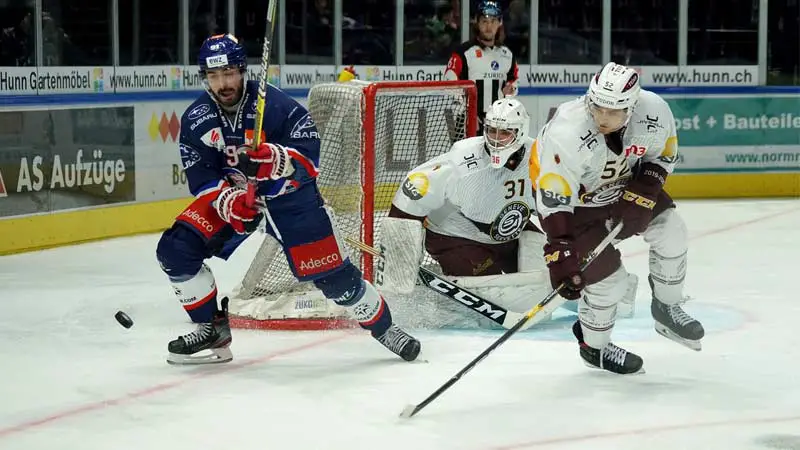In the realm of professional hockey, the concept of a bridge deal holds a pivotal role in shaping the trajectory of a player’s career.
These short-term contracts, typically spanning two to three years, serve as a vital transition phase for players moving from their entry-level contracts to unrestricted free agency.
When discussions arise about player contracts in the NHL, the term “bridge deal” often emerges as a strategic option for both players and teams to consider.
These bridge deals are specifically designed for restricted free agents, providing them with a platform to showcase their skills and negotiate more favorable terms once the contract expires.
By delving into the intricacies of bridge deals in the NHL, one can uncover the strategic advantages they offer in navigating the complex landscape of professional hockey contracts.
Understanding Bridge Deals in Hockey
The Concept of Bridge Deals
A bridge deal in hockey is a short-term contract, usually lasting 2 to 4 years, signed by players after their Entry Level Contract (ELC) ends.
It serves as a transitional period for players to demonstrate their abilities before committing to a long-term deal.
Teams use these contracts to assess the player’s performance over a set timeframe, aiding in roster management and salary cap strategies.
The Role of Bridge Deals in Player Development and Team Strategy
Bridge deals in hockey are important for player development and team strategy. They give players a chance to showcase their skills, improve their value, and negotiate better contracts later on.
For teams, bridge deals allow them to evaluate a player’s potential without committing to long-term contracts too soon, helping with roster planning and financial management.
These agreements play a crucial role in managing player contracts in hockey, benefiting both players and teams.
Analysing the Impact of Bridge Deals

Evaluating the Pros and Cons
Bridge deals in professional hockey come with both advantages and disadvantages that impact both players and teams.
Pros:
- Player Showcase: Bridge deals provide players with a platform to demonstrate their skills and value, leading to potential larger contracts in the future.
- Flexibility for Teams: These short-term contracts allow teams to evaluate a player’s performance over a transitional period without committing to a long-term deal too soon.
- Financial Benefits: For players, successful bridge deals can lead to higher salaries and better terms once the contract expires.
- Risk Mitigation: Teams can manage risks associated with player performance fluctuations by opting for bridge deals before committing to extended contracts.
Cons:
- Uncertainty: Players might feel uncertain about their future with short-term contracts, as it can affect their long-term stability and security.
- Lack of Long-Term Planning: Teams may face challenges in long-term roster planning and development by relying heavily on temporary bridge deals.
- Potential Disputes: Differences in salary expectations between players and teams can arise at the end of a bridge deal, leading to negotiation challenges.
Case Studies: The Successes and Pitfalls
Examining specific cases of bridge deals in hockey sheds light on the successes and pitfalls associated with this strategic approach.
Success Stories:
- Conor Sheary: After signing a three-year deal with the Penguins, Sheary showcased his skills during the contract, leading to a successful Stanley Cup win for the team.
- Kevin Hayes: The Flyers benefited from a cost-effective bridge deal with Hayes, resulting in improved performance and valuable contributions to the team.
- Negotiation Issues: Some players may struggle to negotiate favorable terms at the end of a bridge deal, impacting their future in the league.
- Performance Fluctuations: In cases where players do not meet expectations during the bridge deal period, teams may face challenges in determining the next steps.
Analyzing these case studies provides insight into the varying outcomes of bridge deals in hockey, highlighting their impact on player development and team management strategies.
Navigating the Salary Cap with Bridge Contracts
Strategies for Teams to Maximize Cap Flexibility
Teams strategically use bridge contracts to optimize cap flexibility by choosing shorter and less costly deals, which helps them manage their financial resources effectively, particularly when nearing the salary cap ceiling.
This enables teams to address immediate roster requirements or secure long-term agreements for essential players without overspending.
The salary cap influences teams’ player acquisition and retention capabilities; hence, opting for bridge contracts when close to the limit assists in preventing excessive financial commitments and ensures adaptability to evolving player values while sustaining competitiveness in team rosters.
How Bridge Contracts Influence Team Composition
Bridge contracts play a significant role in shaping team composition. These transitional agreements impact a team’s ability to balance short-term needs with long-term goals.
By offering bridge contracts, teams can assess player performance over a limited period, allowing them to make informed decisions regarding roster adjustments.
Player negotiations involving bridge contracts often revolve around maintaining a competitive team within the constraints of the salary cap.
Teams leverage these agreements to strategically manage their financial resources, ensuring a balanced roster with talented players while navigating budgetary limitations.
The Player Perspective on Bridge Deals

Leveraging Performance for Future Contracts
Bridge deals, which follow Entry Level Contracts (ELCs), provide players with a chance to demonstrate their abilities and potential growth to secure better contracts in the future.
Excelling in these short-term agreements can enhance a player’s value and impact their earning potential by impressing current teams and attracting interest from other teams.
Considerations for Financial Security and Career Progression
Players in the NHL face a decision between short-term financial gains and long-term career goals when negotiating bridge deals.
A one-year deal allows for proving value and potentially securing a better contract later, while a multiyear contract offers stability and focus on performance without ongoing negotiations.
Striking the right balance is crucial for players to make strategic decisions that align with their future prospects in the league.
Market Influence on Bridge Deals
Comparing Bridge Contracts Across the League
Market influences are key in determining bridge contracts, especially in the NHL where a city’s allure can affect player decisions.
Factors like lifestyle and exposure contribute to a city’s appeal for players, influencing their contract negotiations.
Teams should consider these aspects to understand how they might need to adjust offers to retain players long-term and meet team objectives.
Trends in Contract Length & Compensation
In the NHL, players and management carefully consider multiple factors when discussing bridge contracts, including market conditions, contract trends, salary cap status, player potential, team dynamics, long-term plans, guaranteed money versus free agency opportunities, performance expectations, loyalty, commitment, and cap implications.
These elements are crucial for both sides to make well-informed decisions that align with their goals and lead to mutually beneficial outcomes in negotiations.
Frequently Asked Questions
What is the significance of bridge deals in professional hockey?
Bridge deals in professional hockey act as transitional contracts for players post-Entry Level Contract (ELC). These short-term agreements enable players to showcase their skills and negotiate better terms while providing teams with flexibility in assessing long-term potential.
How do players benefit from bridge deals in hockey?
Players benefit from bridge deals by leveraging their performance for future contracts. By signing a bridge deal, they can bet on themselves to earn more money on their next contract, balancing short-term gains with long-term career goals.
How do market factors influence bridge contracts in hockey?
Market factors, such as the attractiveness of NHL cities, can impact players’ decisions and teams’ contract offers for bridge deals. Understanding trends in contract length, compensation, salary cap situations, player potential, and team dynamics are crucial for negotiating successful bridge contracts.
Conclusion
Bridge deals in hockey play a crucial role in shaping the landscape of player contracts and team dynamics in the NHL.
These transitional agreements serve as a strategic tool for both players and management, offering a balance between short-term flexibility and long-term career goals.
By leveraging performance and considering various factors such as market trends, salary cap situations, and personal aspirations, players can make informed decisions that pave the way for their future in professional hockey.
Likewise, teams utilize bridge contracts to optimize cap space while evaluating player potential and performance.
Understanding the intricacies of bridge deals is essential for navigating the complexities of contract negotiations and ensuring mutual benefits for all parties involved.
In the fast-paced world of professional hockey, bridge deals stand as a testament to the strategic foresight and collaborative efforts that drive success on and off the ice.








James Felix